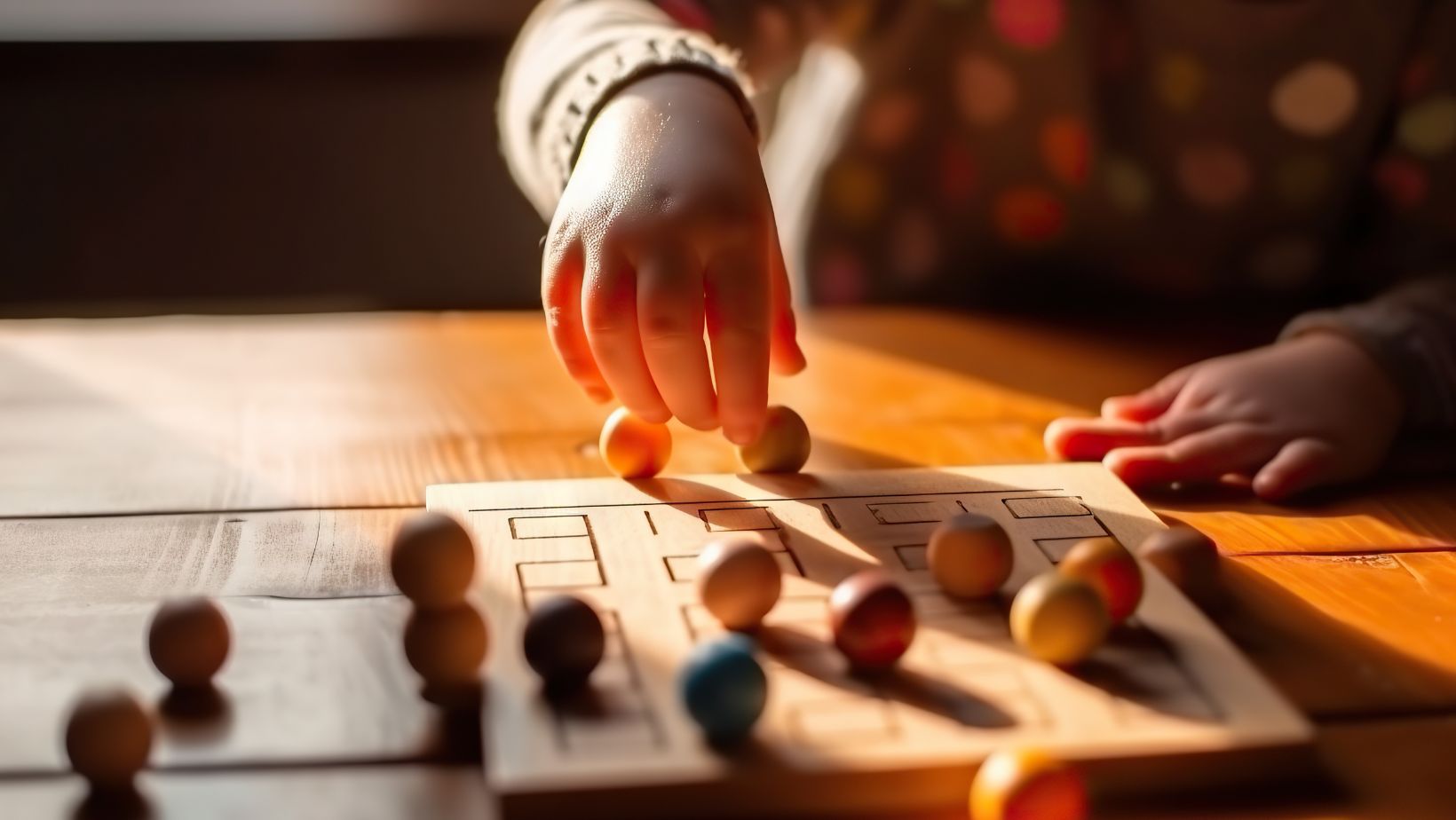
At Dannico Woodworks, we believe childhood is a time for exploration, creativity, and growth. The choices we make for our children during these early years—especially the toys they engage with—can make a real difference in how they learn and develop.
Montessori toys, in particular, have gained popularity for their ability to nurture independence, curiosity, and hands-on learning. But with so many options out there, how do you know which ones are truly right for your child?
This guide breaks down what Montessori toys are, why they matter, and how to confidently select the best ones for your little learner.
What are Montessori Toys?
Montessori toys are designed around the educational philosophy of Dr. Maria Montessori, which emphasizes independence, self-directed play, and real-world learning.
Unlike flashy, battery-operated gadgets, Montessori toys are simple, purposeful, and made to encourage active engagement.
Instead of entertaining children, they empower them to think, explore, and solve problems. For example:
- A wooden puzzle helps develop problem-solving and hand-eye coordination.
- Stacking blocks support fine motor skills and introduce balance concepts.
- Practical life tools like a child-sized broom or pitcher build independence and confidence.
The magic of Montessori toys lies in their simplicity—they give just enough challenge to spark curiosity without overwhelming the child.
Why Choosing the Right Montessori Toys Matters
The right toys do more than pass the time.

They:
- Support Developmental Milestones: Toys that match your child’s age and stage encourage growth in motor skills, language, and problem-solving.
- Build Independence: Montessori toys promote self-directed play, helping children feel capable and confident.
- Encourage Focus: Simple, purposeful toys allow children to concentrate and engage deeply, rather than hopping quickly from one flashy distraction to another.
- Foster Creativity and Imagination: Open-ended toys inspire children to use them in new and inventive ways.
As parents, choosing wisely means we’re not just filling shelves with toys—we’re investing in tools that shape how our children learn and grow.
How do I Select Appropriate Montessori Toys?
1. Match Toys to Your Child’s Developmental Stage
The foundation of Montessori is meeting the child where they are. Consider:
- Infants (0–12 months): Choose toys that focus on sensory exploration and simple cause-and-effect, like grasping rings, rattles, or soft textured balls.
- Toddlers (1–3 years): Look for stacking toys, nesting cups, shape sorters, and child-sized practical life tools (spoons, pitchers, cleaning sets).
- Preschoolers (3–6 years): Offer puzzles, counting beads, dressing frames, or early construction toys that encourage problem-solving and coordination.
Always observe your child’s interests and abilities—sometimes they’re ready to explore beyond their age group.
2. Look for Simplicity and Purpose
Montessori toys are often made of natural materials like wood and designed with a clear purpose. Avoid toys with flashing lights, loud noises, or too many functions. A toy should invite your child to focus and explore rather than passively consume.
For example, a simple set of wooden blocks can do far more for your child’s imagination and motor skills than a plastic toy with buttons that sing and light up.
3. Choose Real, Functional Items Where Possible
Montessori encourages giving children tools that reflect real life. Instead of a pretend tea set made of flimsy plastic, consider a small ceramic cup or a sturdy wooden spoon. These practical life tools help children learn real skills while building independence.
At Dannico Woodworks, our approach to furniture follows this same principle—designing child-sized, functional pieces that empower kids to participate fully in their daily lives.
4. Prioritize Quality and Safety
Montessori toys should be durable and safe for little hands. Wooden toys are often preferred not just for their natural beauty, but also for their sturdiness and eco-friendliness.
Before purchasing, ask:
- Is the toy free from toxic paints or finishes?
- Are the edges smooth and safe?
- Will it last through years of play and exploration?
At Dannico Woodworks, we understand the importance of safety and quality—that’s why every piece of children’s furniture we create is crafted with durable, non-toxic materials built to stand the test of time.
5. Encourage Open-Ended Play
Some of the best Montessori toys don’t have one “right” way to play. Blocks, nesting bowls, and natural loose parts can be used in countless creative ways. Open-ended toys encourage problem-solving, imagination, and persistence—all key life skills.
6. Observe Your Child’s Interests
Montessori emphasizes observation. Watch how your child plays, what excites them, and where they struggle.
If your toddler is fascinated by pouring water, introduce a child-sized pitcher. If your preschooler loves building, offer a set of wooden blocks or stacking stones.
Toys that connect with your child’s natural curiosity will be the ones they return to again and again.
7. Keep It Minimal
Less is more. Children thrive when they’re not overwhelmed with too many choices. A few carefully chosen toys can provide hours of exploration, while overflowing shelves can lead to distraction. Rotate toys every few weeks to keep playtime fresh without needing to buy constantly.
FAQs
Are Montessori toys only wooden?
Not always, but wood is common because it’s durable, safe, and provides a natural sensory experience. Some Montessori toys can be made of metal, fabric, or other safe materials.
Do Montessori toys replace traditional toys?
Not necessarily. They simply shift the focus from entertainment to purposeful, self-directed play. Many families use a blend, but Montessori toys often become the favorites.
Are Montessori toys expensive?
They don’t have to be. While high-quality wooden toys can be an investment, they last much longer than mass-produced alternatives. You can also incorporate everyday household items into play—measuring spoons, cloth napkins, or stacking bowls can be Montessori-inspired.
Can Montessori toys be used with older kids?
Yes. While they’re most popular for infants, toddlers, and preschoolers, the principles of independence and open-ended play benefit children of all ages.
Final Thoughts
Choosing Montessori toys isn’t about buying the most trendy or expensive items. It’s about selecting toys that support your child’s growth, independence, and creativity while keeping playtime simple and purposeful.
At Dannico Woodworks, we take the same care in designing children’s furniture—creating functional, safe, and beautiful pieces that give kids the tools to thrive in their own spaces.
When it comes to your child’s play and environment, every choice makes a difference. What kind of toys do you think will inspire your child most—ones that entertain, or ones that empower?



